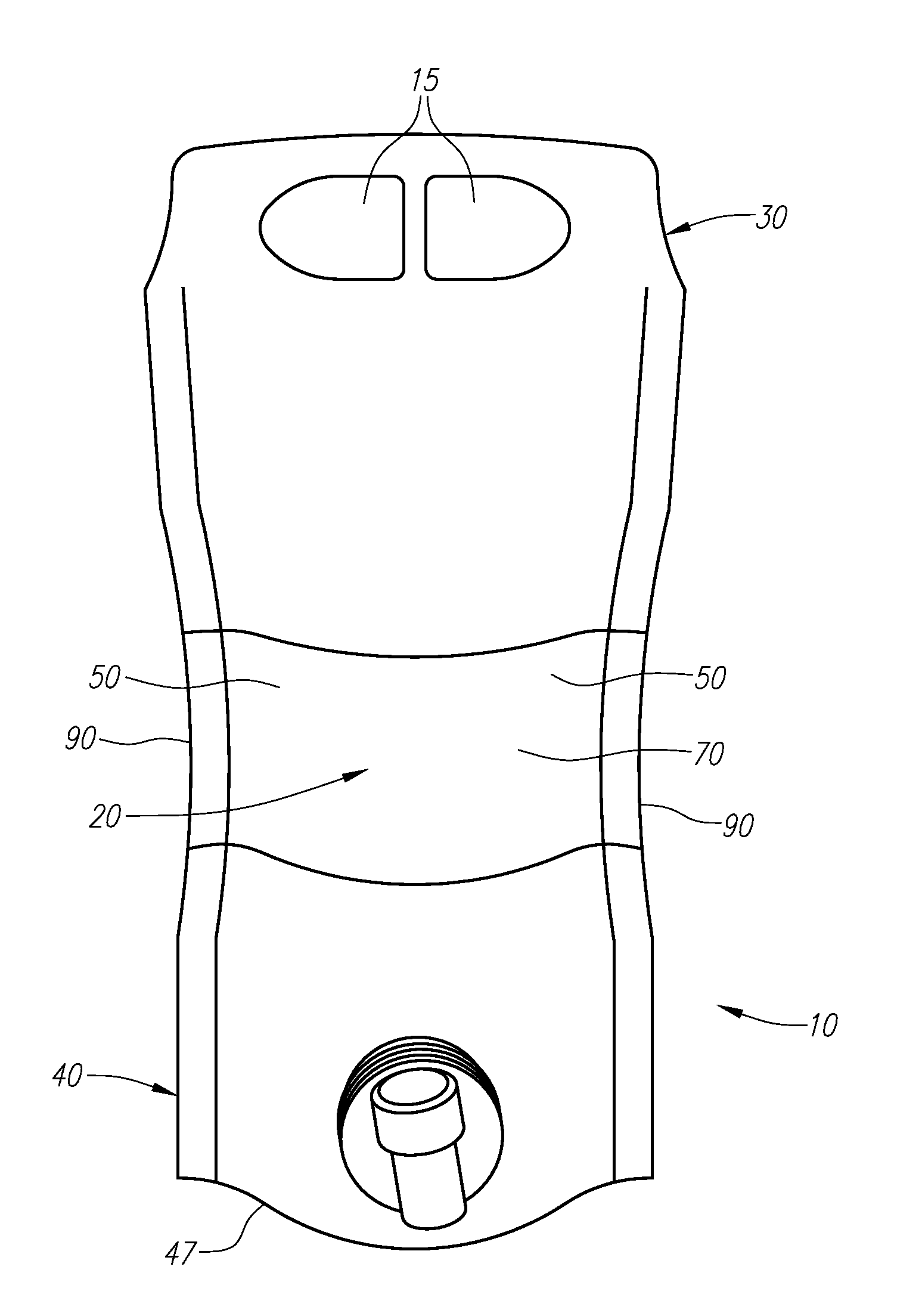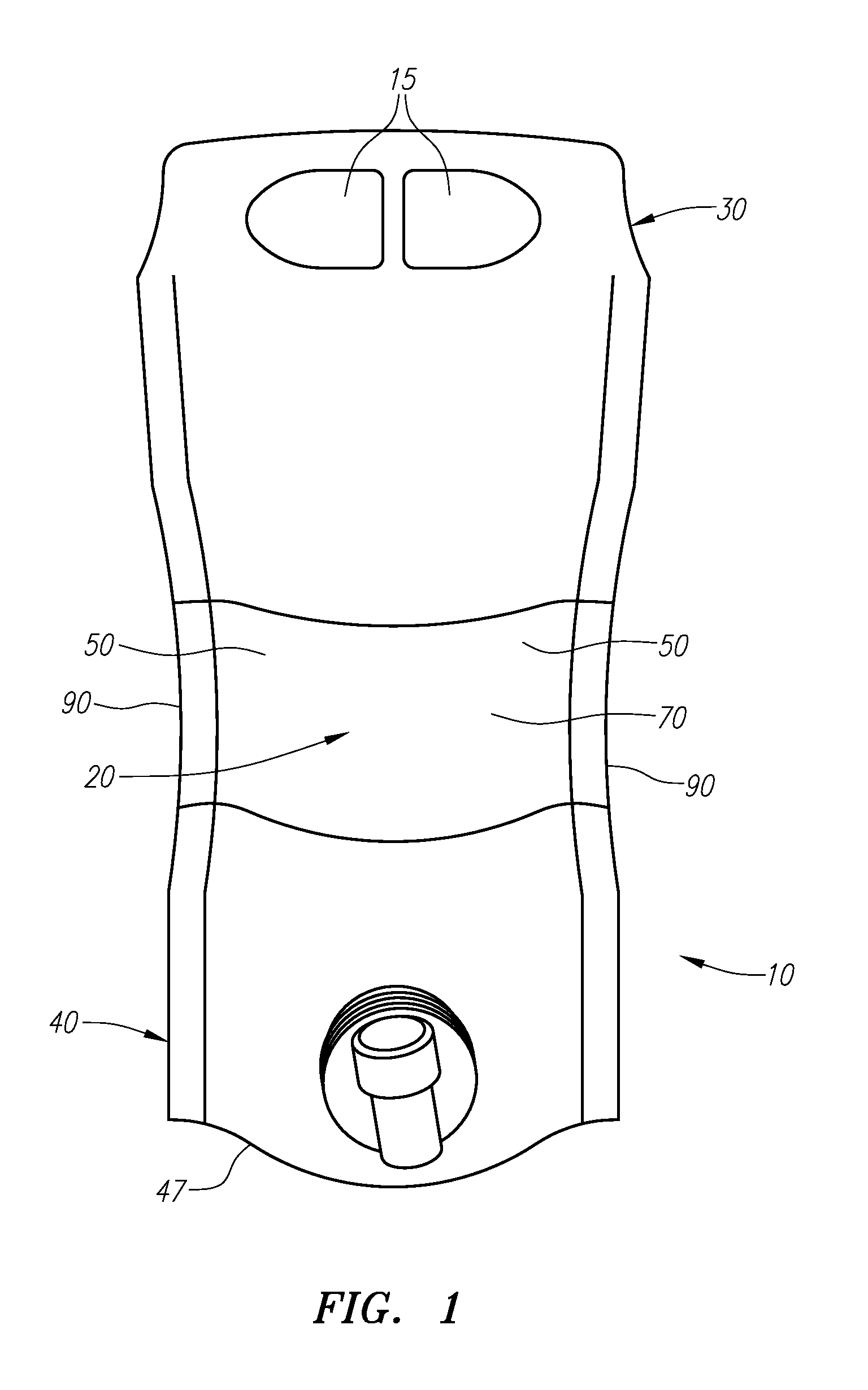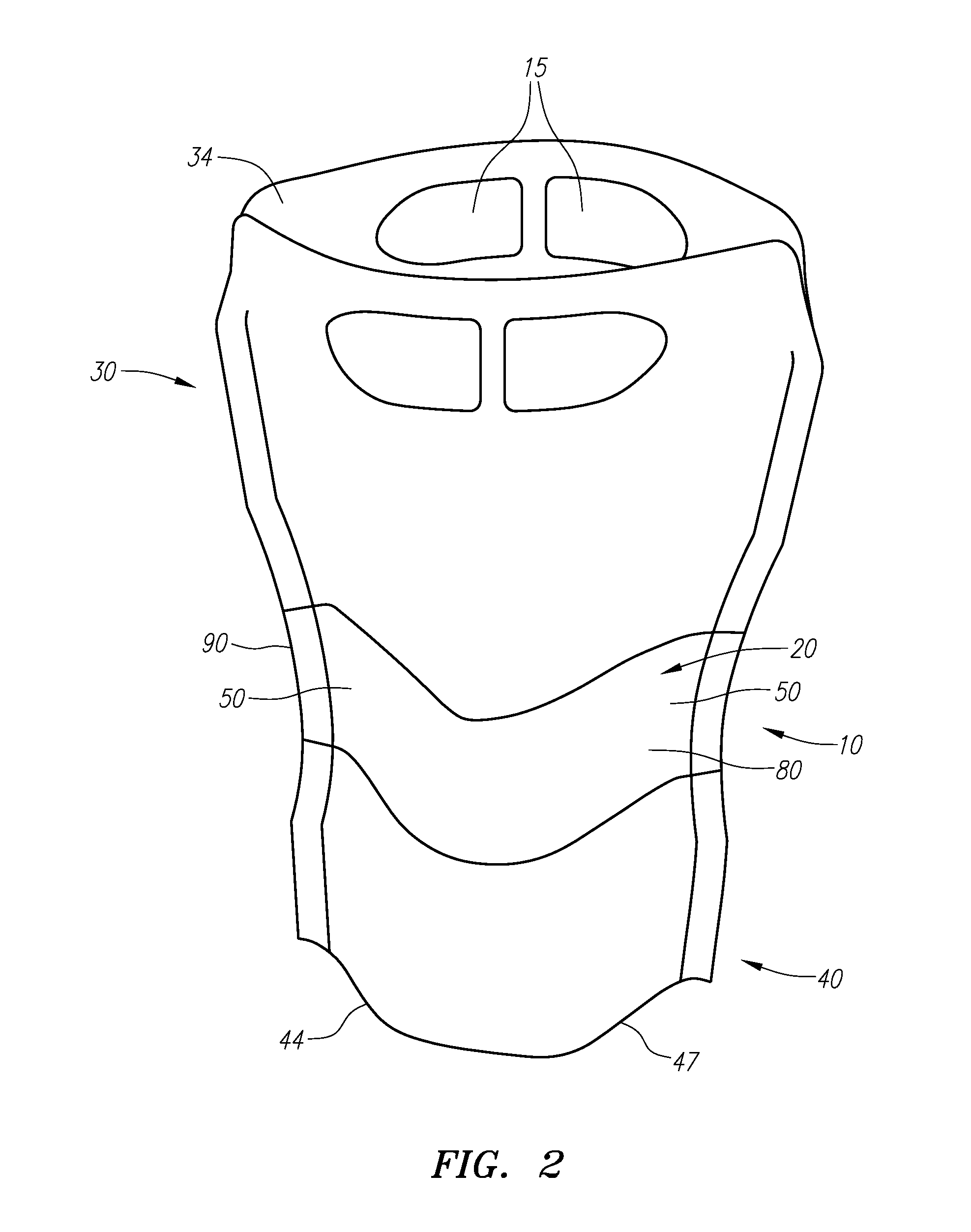Rigid packages, on the other hand, often involve additional expense and manufacturing effort.
Additionally, rigid packages often consume more space when stored or placed on retail shelves.
Rigid packaging also provides fewer options for customization and brand recognition.
Among them is the inability for the flexible packaging to retain stability and remain upright or stand in a vertical position.
Many existing flexible packages tend to fold over due to the weight of the fluid contained therein and / or the top-heavy nature of the packaging.
This inability to remain upright is a significant drawback.
And where a flexible package cannot remain upright on a shelf and serve that promotional purpose, sales may be hurt and retailers may discontinue buying the product.
A flexible package that is prone to folding over or collapsing may lack product integrity during the shipping and distribution cycle.
In particular, such a package could develop flexing or flex cracks during transit cycles where the package may experience a high degree of vibration leading to degradation of the film integrity and cause leaks.
In addition, flexible package that is prone to folding over or collapsing may be difficult to store or otherwise
handle.
Furthermore, the end
consumer may have difficulty dispensing fluid from a folded-over package leading to
spillage and lack of repeat purchases.
Still further, because an unstable flexible package would tend to fold over at the same area, that area would tend to become an area of flex
cracking in the film during distribution where handling and / or vibration would weaken the seals or film structures in those areas to cause leaks or pin holes.
The foregoing problems may not be a major concern with small packages that simply do not contain enough fluid to become top-heavy or otherwise unstable so as to fold over.
However, the foregoing problems are exacerbated for flexible packaging as the size or volume of the package increases.
This generally occurs because as the package increases in size or volume, the increased volume of fluid weighs more, which may lead to
instability.
Furthermore, larger packages may become top heavy because of the weight of the fluid at or near the top of the packaging.
This in turn causes the
instability problems described above because the package is more susceptible to fold over at or near its middle portion.
Instability problems may especially arise when the package experiences a perturbation or indentation that may occur when the package is moved or bumped.
For example, when the package is in the transit cycle, or when the package is placed on a retail shelf, the forces it experiences from this movement may cause it to fold over.
Alternatively, if a
consumer opens a fitment to dispense the fluid, this perturbation may cause the package to fold over.
As another alternative, if a prospective
consumer touches a package on a retail shelf, this indentation force may cause the package to fold over.
With such designs having straight edges, the top-heavy nature of the design and / or the weight of the liquid may cause the package to fold over or collapse as discussed above.
But despite these advances in packaging technology and the potential benefits, the inability for flexible packages, especially large packages, to remain stable and upright still exists.
However, the
hourglass shapes used with these packages do not appear to be designed to address the
instability issues discussed above, such as the gravitational or other forces associated with the fluid contained in the package.
In sum, the
hourglass sides of existing packages do not appear to be designed to address forces and improve stability of the package so that it remains upright.
However, these larger pouches are often found in corrugated boxes where the box provides the stability and the flexible
film structure is solely for containment within the box, and the
graphics are on the exterior of the box and not the flexible pouch itself.
Another drawback of existing flexible packaging arises from the fact that the package has to be sufficiently wide in relation to its height such that the overall stability of the packaging is maintained.
But current linear or non-linear package designs do not allow for various package shapes and designs.
However, the ribs in existing packaging are typically not constructed to withstand the forces of increased fluid volumes for larger size packaging.
Moreover, the rib construction in existing packaging may be complex and require additional manufacturing steps or materials.
The manner in which many existing flexible packages engage the ground or surface on which they rest also contributes to their instability problems.
Because typical existing bottom skirts are thin, i.e., they generally have the thickness of the material used to make the package itself, such bottom skirts do not provide much stability and are prone to buckling.
This problem is exacerbated for larger packages containing more fluid, which imparts more weight on the bottom skirt.
 Login to View More
Login to View More 


